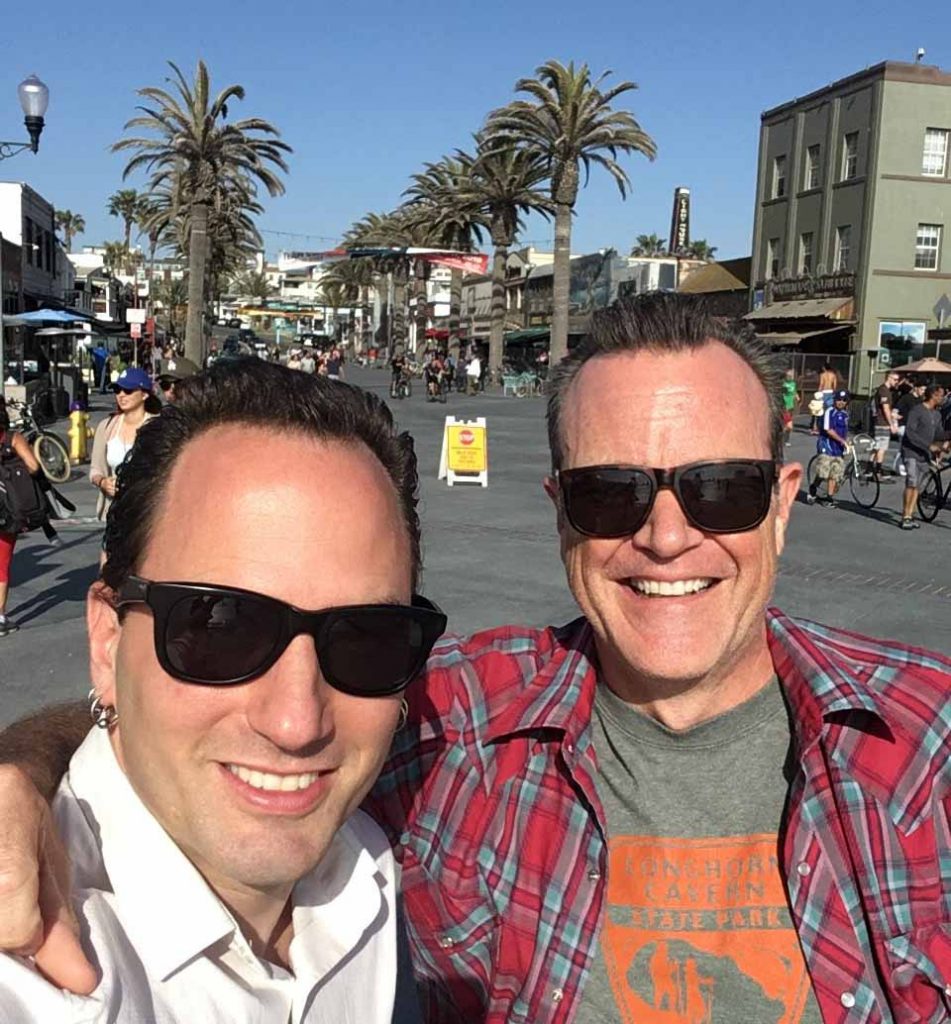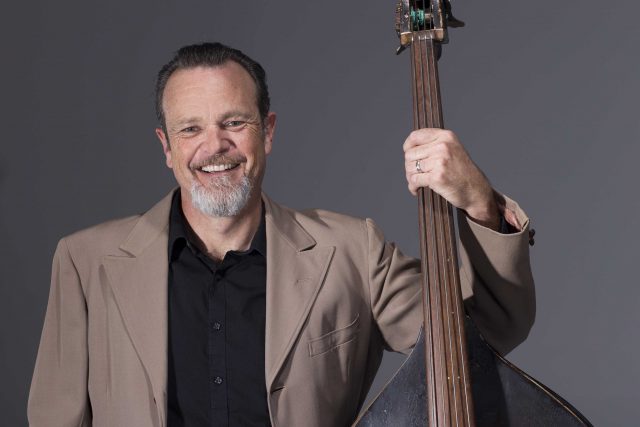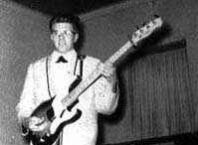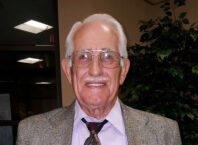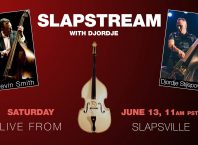I still remember hearing the album Stranger Things by High Noon for the first time. I was in high school and already played bass fairly decent. I was experimenting with different slap patterns and was a bit frustrated that everybody was playing the same licks. I wanted to hear more complex patterns and more solos. Then I heard Long Empty Stretch of Highway and BlueBonnet Boogie… I was blown away by the groove and cool slap bass solos. I finally heard someone who had a passion and appreciation for the tradition and desire to move the style forward.
Kevin Smith was born in Arvada, Colorado. Later on, he moved to Denver, then Austin, which has been his hometown for over 30 years. Over the years, Kevin Smith became the voice of Texas roots bass. Almost everyone coming out of Texas, in the 1990’s and 2000’s, started to sound like him. His strong groove and precise slap made him a favorite bassist for many. Besides his bands High Noon and Heybale, he has also played with Ronny Dawson, Dwight Yoakam, Willie Nelson, Brian Setzer and dozens of local roots artists in Austin.
I’m proud to present to you here, on the Art of Slap Bass, for the first time ever:
KEVIN SMITH
Djordje: Howdy Kevin!
When did you start and what inspired you to play upright bass?
Kevin: When I started playing, I was listening to the Sun Sessions and the Stray Cats, along with rockabilly stuff like Gene Vincent and Eddie Cochran. In ’87 I saw Lee Rocker on a TV show called “Private Eye” playing slap style, and I was amazed. “That’s where that sound is coming from.” About the same time I saw Thomas Yearsley with the Paladins, and I was totally hooked. His bass sounded so full, and he and drummer Scott Campbell are one of my favorite rhythm sections ever! I didn’t know anything about upright amplification at the time, and I didn’t know you could play one with a band in a club. From then on I was on a mission…
Djordje: How did you learn to play? Any formal instructions?
Kevin: I’ve had a few lessons over time, but I’m mostly self taught. When High Noon got started in ’89, we practiced or played 5 nights a week, and the gigs we were doing were 4 hour honky tonk gigs where you had to keep people dancing and drinking, so we really put in some serious time. The older I get, the more time I spend on fundamentals like scales.
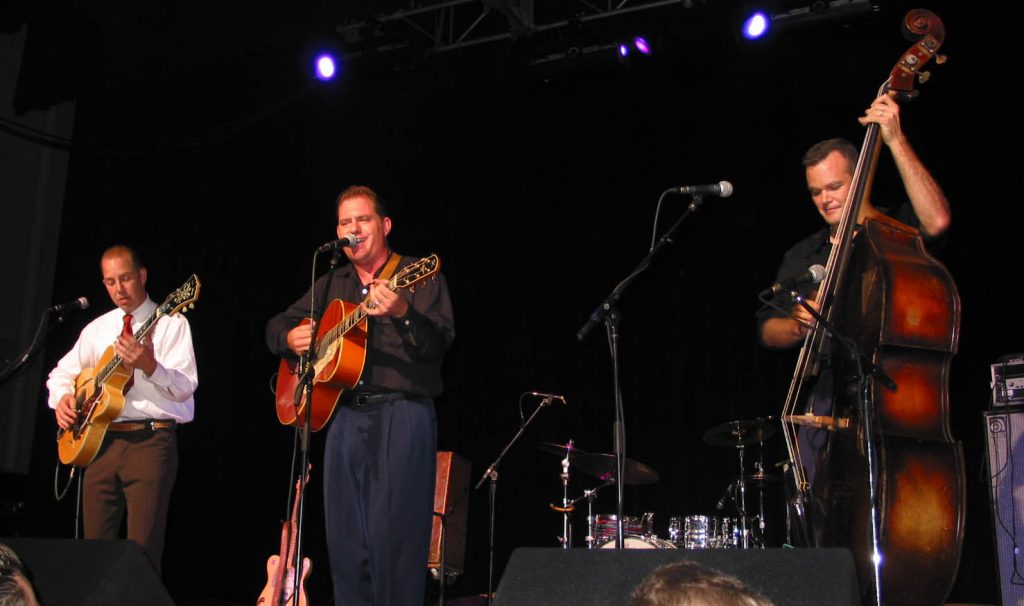
Djordje: What came first, pizzicato, arco or slap and how did you learn slap technique?
Kevin: Slap definitely came first. Seeing Lee Rocker got me started, then I just started figuring it out. I was fortunate that I had no rules so whatever worked was fair game, and I had plenty of opportunity to try different things on gigs.
Djordje: You are one of the rare players that regularly plays gut and steel strings. Does your playing style change at all and how would you describe the difference in the sound?
Kevin: I keep my old bass (the Ideal) strung with Gamut wrapped D and G gut strings, and I’m looking for a good match for the E and A. The Gamut E and A are round wound, so I’m going to try Spirocores next. The nylon wrapped D and G have a little more mass and a clean defined slap sound. Humidity is the main factor in not using pure gut. They don’t last long in Texas. I started out with Supernils because of the light tension, and that put me on the road to gut strings.
For a while, when I had just the one bass, I used Eurosonics for a little more tension and definition. They’re a good middle ground between gut and steel. Once I got the Upton bass, I tried several different types of steel strings before I settled on Thomastik Spirocores. They sound warm without being brittle or harsh, they’re easy to bow on, and there’s no drift in the intonation. They last a long time ,too.
I change basses depending on the gig. If the bass’ role is more rhythmic and I don’t need much sustain (Trad Jazz, Rockabilly), I use the gut string bass. When I need more sustain and note definition (Country, Singer Songwriter stuff), I use steel. In the studio, I follow the same idea, but It’s a little easier to interchange the two. When I’m on tour now I have an Upton Boehemian hybrid travel bass, and I keep it strung with Thomastics.
Djordje: Are you able to play all slap patterns on steel strings that you normally use on guts?
Kevin: That depends on how my stamina is currently. I can play mostly the same stuff on steel, and if I’m getting ready for a slap gig, I try to rehearse on the steel strings first to build my strength up, then use guts on the gig and I find I have plenty of stamina.
Djordje: Historically there was a lot of confusion about names for different slap patterns (read about it here). What are the names that you use and what kind of different slap patterns do you use in your playing?
Kevin: I’ve always tried to think time when I describe slap. A single slap would be grabbing the string and letting it snap the fingerboard, with the note and the click sounding at the same time. A double slap would be sound like a 4/4 shuffle (like you’d play over a Ray Price tune without a drummer) or if you straighten the time out between the slap and the note, you get more of a Rockabilly feel. A Johnny Cash type of feel I call a two-beat. I’ve always called a drag slap a triplet (tick,tick,boom) because I play it in the space of a 1/4 note, but there’s three distinct sounds. If you reverse that pattern, and play them consecutively (boom, tick, tick, boom, tick, tick) those are triplets as well. Most everything I do is based on those rudiments, and when I practice for a slap gig, I go over all these feels at a slow tempo, and make sure the notes and the slaps are succinct and in time, and then speed up to make sure that I’m going to speak well and be heard correctly.
Djordje: Slap bass pattern that is nowadays often called “Drag Slap” (although “Roll Slap” might be more appropriate name) become almost like your signature riff. It’s possible to hear something similar on early recordings like Jean Goldkette’s Dinah with amazing Steve Brown on bass. How did you develop that pattern?
Kevin: I stumbled on that while practicing triplet rudiments. It’s a variation on the triplet, just played in reverse. With High Noon I was always looking for a way to play drum accents and fills.
Djordje: You also developed unique way for playing regular triplets where you use fingers and the bottom of the palm (instead of fingers only). It seems that that way is very good for getting speed without losing precision. Can you describe this technique a little more?
Kevin: I play that kind of triplet (Boom tick tick, straight time) by letting my hand pull the string, and instead of pulling straight out when I release the string, I push/launch the hand towards the outside shoulder of the bass, then letting the base of the palm make one tick, let it bounce, then make the next tick with the base of the fingers, bounce again and grab the string and let it snap, and “launch” my hand toward the outside of the bass and repeat. Start with large slow motions and then make the launch lighter to make the timing faster.
Djordje: Who are your bass and more specifically slap influences?
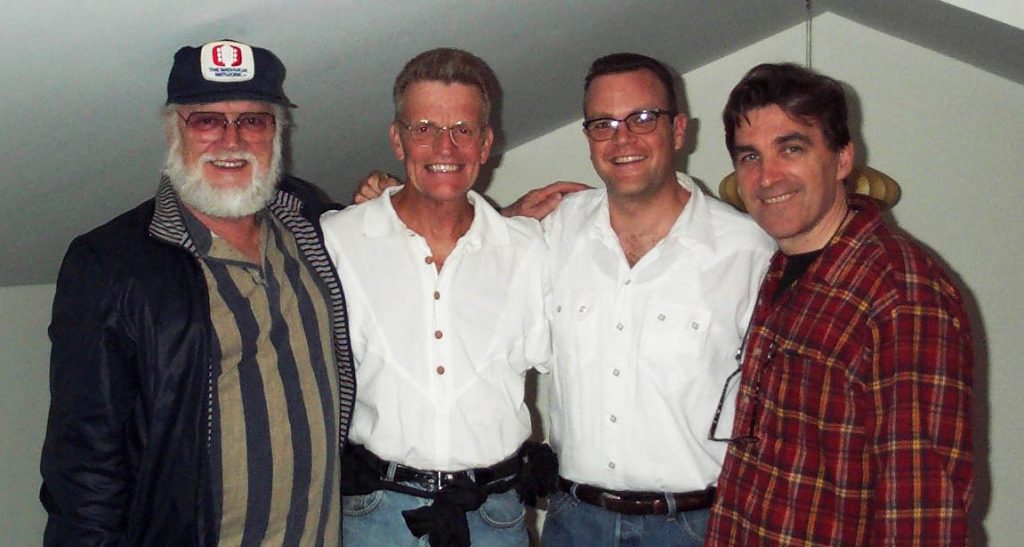
Kevin: On upright, my biggest influences are Bob Moore and Milt Hinton. Both had impeccable time, feel and groove. Bob’s shuffles, time and note choices were amazingly graceful. Milt could read music, play arco, and slapped up into his eighties, and I also think he was the guy who played slap in a big band/swing context, which took slap from the 20’s into the 40’s and beyond. A huge contribution! I named my son after Willie Dixon, so that says how I feel about him. All of their music, perfect or imperfect, communicates really strongly and effectively. Not to mention guys like Bill Black, Marshall Lytle, Roy Husky, Joe Zinkan, Lightning Chance. Pops Foster’s playing and his book “Diary of a New Orleans Jazzman” were a big influence too.
Djordje: Do you like any slap players nowadays?
Kevin: Austin has turned into a great slap bass town. Beau Sample was living here and he’s great! He’s in Chicago now. Ryan Gould is another great slap player here in town. He plays old style Jazz slap really well. Jake Erwin is great, Jimmy Sutton, Dave Roe and Dennis Crouch are all great players. I love that a lot of guys are studying bass in school, and treat slap as a viable extension of technique as opposed to a novelty.
Djordje: Would you say that playing bass guitar helped you for learning upright bass and how?
Kevin: I only played electric for 6 months or so before switching to upright, so it didn’t influence me too much. My first real electric bass was an ampeg AMB-1, which didn’t have a magnetic pickup, so you could slap it upright style without it clicking on the pickups, so I discovered some rudimentary feels on that before I switched to upright.
Djordje: Were you playing any upright bass with your early Colorado based Rockabilly bands Shifters and Jinns?
Kevin: No, that was a really short period of time. As soon as I moved to Austin, I played upright almost exclusively.
Djordje: You played with great guitar player Olivier Giraud in few different bands – Skyliners, Asylum Street Spankers and 8 1/2 Souvenirs. Are there any plans for future collaborations with him or any of these bands?
Kevin: I love playing with Olivier! We don’t see each other too much , but I still play with him occasionally. The Spankers do anniversary shows (one was released on DVD called “Re-assembly”) sometimes, and I get to play one of those every few years…
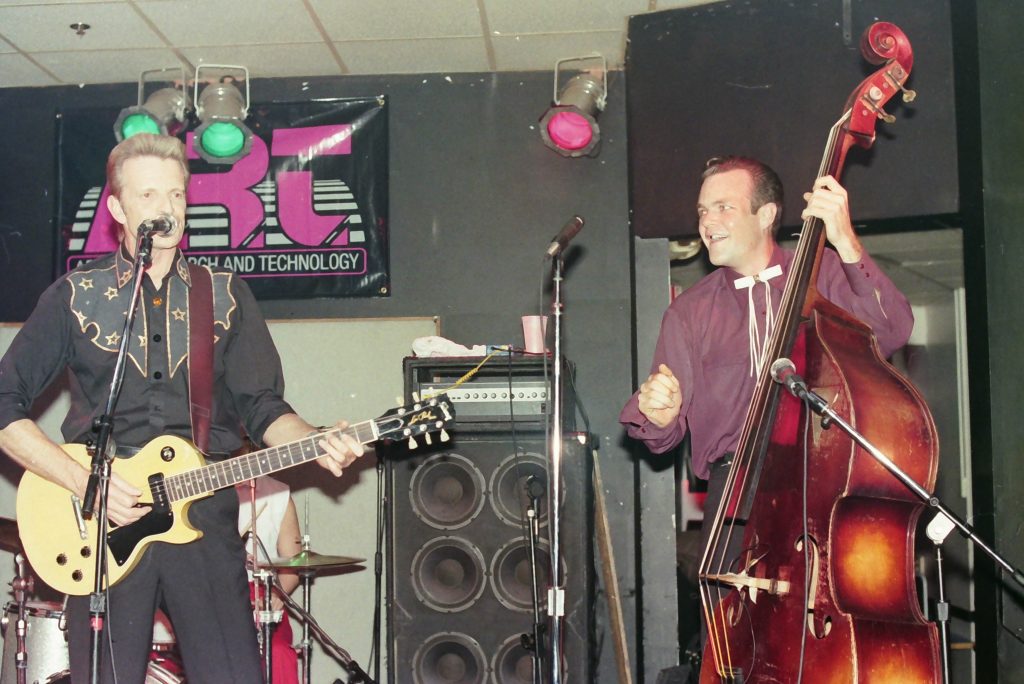
Djordje: You toured quite a bit with Texas Rockabilly legend Ronnie Dawson. How was your experience playing with him at Carnegie Hall?
Kevin: Carnegie Hall was a great show, but it doesn’t really stick out that much. What I remember most about playing with Ronnie was his commitment to what he did. When we got on stage we took no prisoners. 5 or 5000, he gave his all every time. “We didn’t come here to sleep!”
Djordje: Who are you playing with these days?
Kevin: My main gig right now is Willie Nelson and Family, I’ve been there since January of 2012. When I’m not on the road I play with Heybale!, a traditional country band. We’ve released 3 albums. Heybale! is like going to country music school! Redd Volkaert plays guitar and Earl P. Ball, who played with Johnny Cash, Buck Owens and Wynn Stewart, among many others, plays piano. Dallas Wayne on Vocals and Tome Lewis on drums. we’ve been doing that gig for 18 years now. I do a fair amount of session work, too.
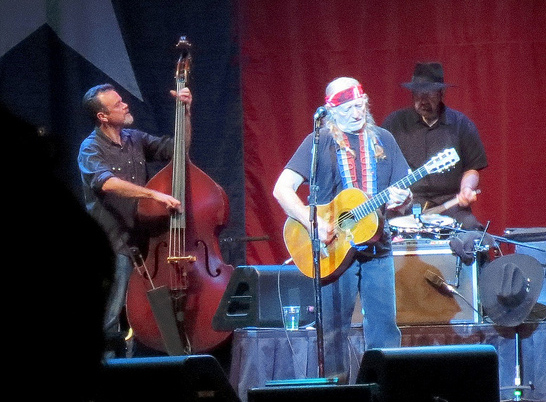
Djordje: You’re definitely one of the top slap bass players nowadays and it’s great that you played with some major artists like Dwight Yoakam, Brian Setzer Orchestra and now Willie Nelson and Family. Those “bigger” guys are often not aware of what’s happening on the underground scene. It would be interesting to hear how did you get involved in these projects.
Kevin: I got the Brian Setzer gig because 8 1/2 Souvenirs had been opening for him on a 6-7 week tour, and he heard me play a lot of shows. He called me to fill in on the end of the tour. The Dwight gig came about through Dwight’s guitarist guitarist at the time, Eddie Perez. He used to live in Austin, and he used to sit in with Heybale!, so he hooked me up with Dwight. I got the Willie gig through Ray Benson, he’s always called me when he needed slap on a session. The “Willie and the Wheel” record and tour, and later the gig with Willie came out of that relationship.
Djordje: How would you compare playing with these artists and their approach to slap bass and bass in general?
Kevin: It depends on the situation. With Willie and Family, I do whatever sounds good and keeps the groove steady. The most input I ever had from Willie was “Come in when you feel comfortable”. With Setzer, I had watched the show so many times, it was pretty simple to get in there and do the show, and put in what I felt was appropriate. Yoakam was a challenge, because you use his instruments and amps, and he sets the tone on stage. I always try to serve the groove and the song above all.
Djordje: For how long did you play with Brian Setzer Orchestra, in what period and how would you describe that experience?
Kevin: I played with the Orchestra for 6 or 7 shows in early 1999, I think. It was towards the end of the Dirty Boogie Tour. That was my first experience with a major tour and I had a blast! We did 2 sold out nights at Caesars Palace in Vegas! It was a great experience.
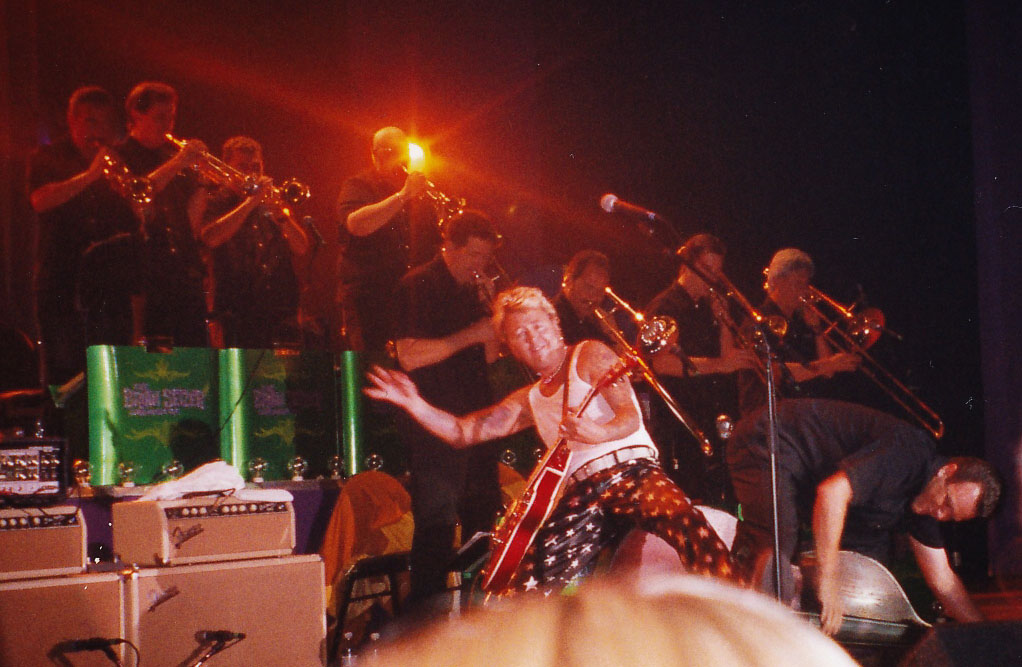
Djordje: In the last few years High Noon hasn’t played much. I’m sure that many Rockabilly fans all over the world would love to see you guys play again. Are there any plans for a new record or tours?
Kevin: Bear Family Records released a High Noon retrospective CD called Flatland Saturday Night! 24 tracks with a great booklet! We’re very excited to have our music out there again! We do gigs occasionally and I love working with Shaun and Sean, but everyone is busy individually, so we don’t have anything planned right now. I’m sure we’ll do something again when the time is right.
Djordje: I really like the recordings you made with Los Cadillos. Are there any plans for a record or more shows with this or other Conjunto bands?
Kevin: No plans at this time. I really enjoy playing and listening to old time Conjunto, so I hope I get a chance again sometime…
Djordje: How many instruments do you own, what are they and what do you currently use?
Kevin: I have 2 William Lewis and Sons basses. They’re plywood, so they amplify well, and they both sound good in the studio. One is the Ideal bass, and the other belonged to Mark Rubin. They’re the two basses in our instructional video. I keep the Ideal strung with gut, and the other with steel. I also have a custom Blast Cult bass that I love, it plays and sounds fantastic! My main touring bass right now is the Upton hybrid travel bass. That’s about 2 too many, but it’s tough for me to put one down once I figure out how it likes to be played!
Djordje: What type of basses work the best for slap by your opinion?
Kevin: It depends on the player. I play with a fairly heavy hand, so plywood works best for me. I’ve never owned a carved bass, so if I had the time, I could figure out how to get a consistent sound. I also prefer ebony fingerboards for tone and durability. I go through rosewood pretty quickly.
Djordje: Can you tell us the story behind the Ideal Cooler logo that you have on your bass for a long time.
Kevin: Shortly after I moved to Austin in ’89 or ’90, some friends and I saw a story on the news that the world famous Skyline club was going to be torn down. Elvis,Scotty and Bill played the Skyline in 1955, and Hank Williams and Johnny Horton both played their last shows there, and later became the Soap Creek Saloon. It was one of the last real honky-tonks in Texas. That night we went down to the club and found our way inside. There wasn’t much left, but the beer cooler was still there, and Olivier took the Ideal badge off (I think it’s brass) and I put it on the bass. I’ve used that bass with just about every band I’ve played with, including High Noon, Ronnie Dawson, The Asylum Street Spankers, 8 1/2 Souvenirs,The Brian Setzer Orchestra, Heybale and on some of the tracks on the Wlllie and the Wheel record.
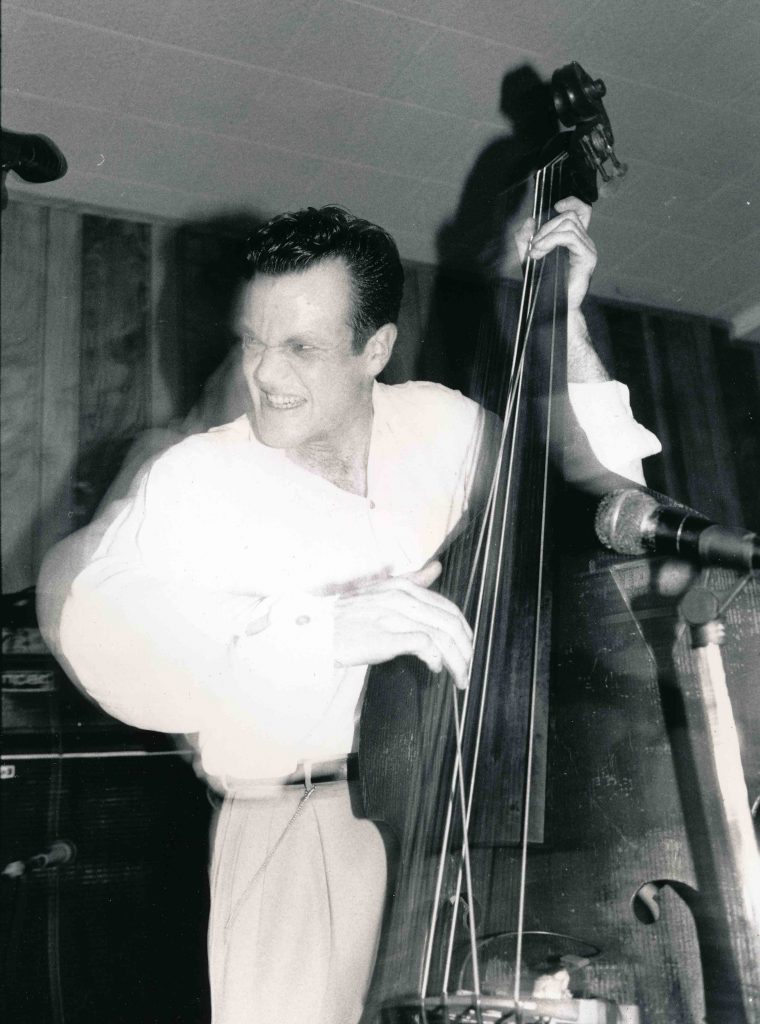
Djordje: Thanks for sharing that cool story. How do you like to record your bass?
Kevin: The best sound I’ve gotten so far was using 2 Neuman U47’s, with one placed in front of the bridge, and one further up by the fingerboard, both about 6 inches away from the bass. I don’t always have access to such great mics, and you have to use whatever is available. I like to use tube pre-amps.
Djordje: Solos that you played with Wayne Hancock – Big City Good Time Gal, Asylum Street Spankers – Startin’ To Hate Country, Mama Don’t Allow, Deep Ellum Blues, Sittin’ On Top Of The World and especially with High Noon – Long Empty Stretch of Highway, Bluebonnet Boogie, Let’s Go Daddy-O and It’s the Beat, brought upright bass playing on the next level on the ‘billy music scene. What is your opinion about bass solos in Rockabilly and Country music?
Kevin: I love doing solos like the ones you mentioned, but I also really love to hear songs where slap is part of the arrangement, and a little bit in the background. Faron Young’s ” I Hear You Talkin” is one of my favorite slap tracks! There’s a lot going on, but the song doesn’t get overshadowed, and when they go to the verse drop into a two beat, the effect is dramatic and exciting!
Djordje: What songs that you recorded would you recommend to bass players that are interested in your slap technique to hear?
Kevin: I really proud of all the stuff I did with High Noon. The Stranger Things album is us at our best, so anything off that record. I like “Jellyroll” and everything I played on the Willie and the Wheel record. The Asleep At The Wheel Bob Wills tribute record “Still The King” was a blast to play on! I played some cool slap stuff (and some cool arco) on the Blast Cult on the James McMurtry record “Complicated Game” that I’m proud of.
Djordje: The instructional video “Slap Bass – The Ungentle Art”, that you released with Mark Rubin in 1995, is considered one of the best on the market. In some of your previous interviews you mentioned a possibility to do a follow up. Are there any plans for that and what would you cover in that one?
Kevin: I’ve revised some of my technique, and I’ve taught a lot more since then, so I think there are much more efficient ways of doing the things we talked about. I’d also bring in a drummer and talk about how to play different grooves, and where slap style fits with the drum parts…
Djordje: What are your preferences for amps and pickups?
Kevin: I have main 2 rigs. At home I use a GK 800 RB with an Eden 4×10 cabinet. No preamp or anything, just straight in to the amp. I use the underwood pickups on both my plywood basses at home. I use my Upton Bohemian Hybrid travel bass with the Upton Rev Solo pickup for touring and my touring Amp is an Ampeg V-4 B going into an Ampeg 4X10 HLF cabinet. I’m using an Acoustic Image Flex as my upright preamp.
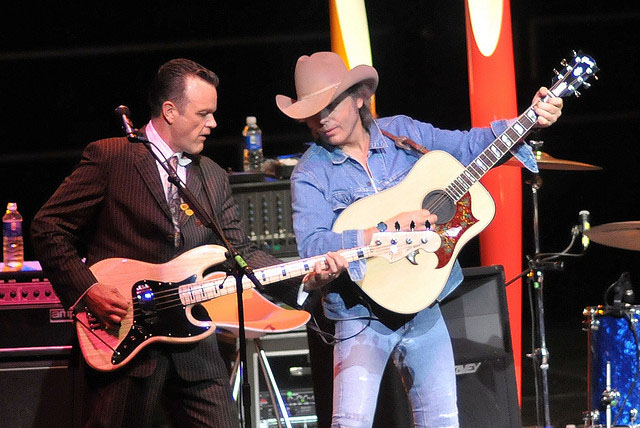
Djordje: How do you travel with your bass and where do you usually keep it?
Kevin: I’ve been using Reunion Blues gig bags forever. I bought one 15 years ago that I keep in Austin, that is holding up great. I have another RB bag that I use on the road, and with the RB bag on the bass, it fits nicely into a David Gage flight case for truck transport or flying. In van, I use the gig bag and make sure it rests on it’s back on top of the gear.
Djordje: Since slap technique is pretty hard on hands, do you recommend any wrist/fingers stretching or any other kind of exercising in order to keep hands in good shape?
Kevin: I stretch a little by gently pulling my fingers back towards my wrist, but the most important thing for me is to warm up slowly playing some rudiments and concentrate on relaxing my shoulders, wrists, and arms as much as possible. Also the more you play, the more you can play, so keeping busy is vital having the stamina to slap for long periods of time.
Djordje: What do you suggest to younger players to practice on a daily basis?
Kevin: For slap playing, rudiments like doubles, triplets, walking, and pizzicato are a must. Try to play every rudiment slowly at first, concentrating on time and enunciation. When it sounds good and clean you can speed it up. Intonation is vital, so playing scales, arpegios, etc. with a metronome are fundamental to improving.
Djordje: Thank you for finding time to do this interview and hope to see you play sometime soon!
Kevin: Thanks for your work contributing to the ongoing Art Of Slap Bass!!! It’s always great to visit with you!
